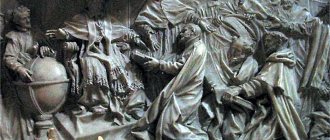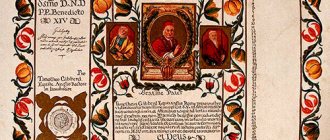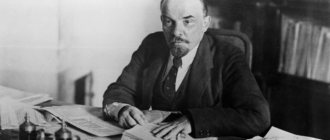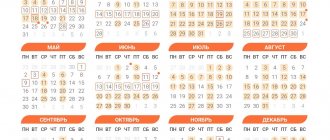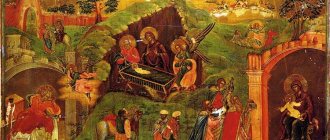Gregorian calendar
Since 46 BC, most countries in the world have used the Julian calendar. However, in 1582, by the decision of Pope Gregory XIII, it was replaced by Gregorian. That year, the next day after the fourth of October was not the fifth, but the fifteenth of October. Now the Gregorian calendar is officially adopted in all countries except Thailand and Ethiopia.
Reasons for adopting the Gregorian calendar
The main reason for the introduction of a new chronology system was the movement of the vernal equinox, depending on which the date of the celebration of Christian Easter was determined. Due to discrepancies between the Julian and tropical calendars (the tropical year is the period of time during which the sun completes one cycle of changing seasons), the day of the vernal equinox gradually shifted to earlier dates. At the time of the introduction of the Julian calendar, it fell on March 21, both according to the accepted calendar system and in fact. But by the 16th century, the difference between the tropical and Julian calendars was already about ten days. As a result, the vernal equinox no longer fell on March 21, but on March 11.
The history of the creation of the Gregorian calendar
Scientists paid attention to the above problem long before the adoption of the Gregorian chronology system. Back in the 14th century, Nikephoros Grigora, a scientist from Byzantium, reported this to Emperor Andronicus II. According to Grigora, it was necessary to revise the calendar system that existed at that time, since otherwise the date of Easter would continue to shift to a later and later time. However, the emperor did not take any action to eliminate this problem, fearing protest from the church.
Subsequently, other scientists from Byzantium also spoke about the need to switch to a new calendar system. But the calendar continued to remain unchanged. And not only because of the rulers’ fear of causing indignation among the clergy, but also because the further the Christian Easter moved away, the less chance it had of coinciding with the Jewish Passover. This was unacceptable according to church canons.
By the 16th century, the problem had become so urgent that the need to solve it was no longer in doubt. As a result, Pope Gregory XIII assembled a commission, which was tasked with carrying out all the necessary research and creating a new calendar system. The results obtained were displayed in the bullet “Among the most important”. It was she who became the document with which the adoption of the new calendar system began.
Julian and Gregorian calendars - differences
The main disadvantage of the Julian calendar is its lack of accuracy in relation to the tropical calendar. In the Julian calendar, all years that are divisible by 100 without a remainder are considered leap years. As a result, the difference with the tropical calendar increases every year. Approximately every century and a half it increases by 1 day.
The Gregorian calendar is much more accurate. It has fewer leap years. In this chronology system, leap years are considered to be years that:
- divisible by 400 without remainder;
- divisible by 4 without a remainder, but not divisible by 100 without a remainder.
Thus, 1100 or 1700 years in the Julian calendar are considered leap years, since they are divisible by 4 without a remainder. In the Gregorian calendar, from those that have already passed since its adoption, 1600 and 2000 are considered leap years.
Immediately after the introduction of the new system, it was possible to eliminate the difference between the tropical and calendar years, which at that time was already 10 days. Otherwise, due to errors in calculations, an extra year would accumulate every 128 years. In the Gregorian calendar, an extra day occurs only every 10,000 years.
Consequences of calendar reforms
Currently, the Gregorian calendar is recognized as the most accurate. According to many experts, it does not require any changes, however, the issue of its reform has been discussed for several decades. Moreover, we are not talking about introducing a new calendar or new methods for counting leap years.
In the existing calendar, months range from 28 to 31 days, the length of a quarter also ranges from 90 to 92 days, and the first half of the year is 3-4 days shorter than the second. This complicates the work of planning and financial authorities. The idea behind the proposed changes is to rearrange the days of the year so that the start of each new year falls on one day, such as Sunday.
Today, there is often an initiative to implement the transition to the Julian calendar in Russia. As justification, the opinion is expressed that Orthodox Russians have the right to live according to the calendar used by the Russian Orthodox Church.
How the Gregorian calendar was adopted in different countries
Not all modern states adopted the new chronology system immediately. The Catholic states were the first to switch to it. In these countries, the Gregorian calendar was officially adopted either in 1582 or shortly after the decree of Pope Gregory XIII.
In a number of states, the transition to a new calendar system was associated with popular unrest. The most serious of them took place in Riga. They lasted for five whole years - from 1584 to 1589.
There were also some funny situations. So, for example, in Holland and Belgium, due to the official adoption of the new calendar, after December 21, 1582, January 1, 1583 came. As a result, the inhabitants of these countries were left without Christmas in 1582.
Russia was one of the last to adopt the Gregorian calendar. The new system was officially introduced on the territory of the RSFSR on January 26, 1918 by decree of the Council of People's Commissars. In accordance with this document, immediately after January 31 of that year, February 14 came on the territory of the state.
Later than in Russia, the Gregorian calendar was introduced only in a few countries, including Greece, Turkey and China.
Calculation of chronology in Rus'
Since the time of the baptism of Rus' from Byzantium, together with the Orthodox Church, the Julian calendar has been adopted as the current one in the state. Since the 10th century, the New Year began to be celebrated in September, also according to the Byzantine calendar. Although the common people, accustomed to the centuries-old tradition, continued to celebrate the New Year with the awakening of nature - in the spring. And most often twice a year: in spring and autumn.
Peter the Great, who strived for everything European, on December 19, 1699, issued a decree on celebrating the New Year in Russia on January 1, together with Europeans. But the Julian calendar still continued to operate in the state.
Moreover, the issue of calendar reform has been raised in the country more than once. In particular, in 1830 it was staged by the Russian Academy of Sciences. However, the Minister of Education at that time, Prince K.A. Lieven considered this proposal untimely.
Only after the revolution in 1918, by government decision, all of Russia was transferred to a new style of chronology, and the new state began to live according to the Gregorian calendar. The Gregorian calendar excluded three leap years within each quadrant. In Russia, the Julian calendar is called the “old style”.
However, the Russian Orthodox Church failed to transfer to the new calendar; through the efforts of Patriarch Tikhon, it managed to preserve traditions. Thus, today the Julian and Gregorian calendars continue to exist together. The Julian calendar is used by the Russian, Georgian, Serbian, and Jerusalem churches, and the Gregorian calendar is used by Catholics and Protestants. In addition, the Julian calendar is used in some Orthodox monasteries in the United States and Europe.
The Gregorian calendar and the Orthodox Church
After the official adoption of the new chronology system, Pope Gregory XIII sent a proposal to Constantinople to switch to a new calendar. However, she was met with refusal. Its main reason was the inconsistency of the calendar with the canons of celebrating Easter. However, later most Orthodox churches switched to the Gregorian calendar.
Today, only four Orthodox churches use the Julian calendar: Russian, Serbian, Georgian and Jerusalem.
Orthodox Life
Archimandrite Nazariy (Omelyanenko), KDAiS teacher, tells the story.
— How did the Julian calendar get into our Church, why do we still use it and not switch to another? For the common man, this is a question to which he often cannot find an answer...
— The Church began to use the calendar starting in the 4th century. Before this, all ancient peoples used so-called smart calendars. If we take the Egyptian, Chinese, and Indian calendars, they were actually associated with the phases of the Moon, primarily with river floods, since this natural phenomenon directly depended on the phases of the planet. In order to successfully engage in farming, people calculated everything and tied their activities to this.
It has long been a known fact that in 45 BC. e. Julius Caesar introduced a new calendar, which began on January 1. The astronomers of Alexandria - this is Egypt - came to the conclusion that it was more important to calculate the spring and autumn equinoxes and plan their agricultural life in accordance with this. This is how the solar calendar arose, to which all subsequent calculations in the Roman Empire began to be tied.
Christianity, which arose in the 1st century, was already subject to this calendar, since the empire lived according to it. And in the first three centuries, when there was persecution of the Christian Church, there were not even holidays as such. The first Christians then simply performed divine services and sacredly kept Sunday, Wednesday and Friday as specific days of the passion of Christ. There were no holidays tied to the calendar - like we now celebrate the Annunciation and Christmas. The holiday began to be established and tied to a specific day in the 4th century. It was then that the First Ecumenical Council, and this is the year 325, first proclaimed that all Christian Churches, all Christian states should live according to one calendar - the Julian. This becomes the general outline of the entire Orthodox world - the order of services and the order of the holidays themselves. It was from the 4th century that liturgical texts were established, the holy fathers began to establish holidays, write church texts for them, and celebrate in the tradition as we see today.
What is the difference between the Gregorian and Julian calendars? In the West, astronomical calculations were made in the 16th century, as a result of which it was stated that the Julian calendar was true, although it had some errors. Astronomers took these errors into account, and on October 4, 1582, Pope Gregory XIII introduced a generally binding calendar for all of Western Europe. The power of the Pope at that time was very strong, so the Gregorian calendar was introduced neither by royal nor imperial decree, but by papal bull.
When they talk about Ukraine, and part of it at that time was part of the Polish-Lithuanian Commonwealth, then these lands also switched to the Gregorian calendar. But there was one thing... Ukraine was Orthodox and in every possible way resisted the process of Catholicism. Union was invented in 1596 as an analogue of Orthodoxy with Roman dogma. Therefore, it is impossible to fully say that Ukraine, as part of the Polish-Lithuanian Commonwealth, switched to the Gregorian calendar in the same year 1582. It was very important for the common population to preserve their Orthodox identity, and the transition to the Gregorian calendar is one of the steps on the path to Catholicism. And, despite the fact that the union instilled its faith, the people of the eastern part of the Polish-Lithuanian Commonwealth - Ukraine refused to switch to the new style.
Interesting fact: in 1583, the Pope wrote a letter to Patriarch Jeremiah II of Constantinople with a proposal: since the entire European world, civil and church authorities switched to the Gregorian calendar, for the identity of documentation, etc., switch to a single chronology system - a new style, Gregorian. In the same 1583, the Patriarch of Constantinople convenes a Council in Constantinople with the invitation of the Patriarch of Jerusalem, where the new style is condemned. The acts of this Council are interesting - they contain some statements, even somewhat unexpected, for example, that people who follow this calendar will not be able to be saved. But a little time will pass - a little over 400 years - and Constantinople will still switch to a new style. But the Gregorian calendar also has its inaccuracies, and at the end of the 19th and beginning of the 20th centuries, Serbian astronomers will establish that all Julian and Gregorian calculations have some discrepancies that we do not notice, but if we take 5-10 years as a time period, then certain days will run differences... They calculated that the Gregorian calendar corresponds to the phases of the Sun, but from 2800 onwards it will have significant shortcomings. And therefore, a new Julian calendar was proposed, which completely coincides with the Gregorian calendar exactly until 2800, and after that it will have a more accurate chronology.
- Nobody uses it now...
- This moment is very interesting. The entire Western Church lives according to the Gregorian calendar. The Eastern Church, the Orthodox, lived according to the Julian calendar until the beginning of the twentieth century. And starting from the 20s of the 20th century, the Orthodox Church began to switch to the new Julian, rather than the Gregorian, calendar. After 2800, the Julian will eliminate the shortcoming of the Gregorian calendar, which they could not take into account in the 16th century. And so there are three calendars: Julian, Gregorian, New Julian. — Our Church now lives according to what calendar?
— The Church lives according to Julian. Everything has to do with politics. Let us remember that the end of the 19th century. – beginning of the 20th century - this is the collapse of the Ottoman, Austro-Hungarian, and Russian empires. National movements begin, and in light of this, each nation tried to “cut through” a window to Europe, including switching to generally accepted measures - weight, mileage, calendar. The same thing happens in Constantinople. In Istanbul at that time, a large empire was disintegrating. In fact, Yugoslavia, Bulgaria, Greece are separated, and the Turkish Republic is formed. All this again raised the issue of establishing a certain unification with the West.
This happened in many respects: there were pounds - they switched to kilograms, there were miles - they switched to kilometers. A question arose about the calendar. In Istanbul, the Turkish authorities raised the issue of switching to a new style, identical to Europe, and in the 20s the state decided to do so. In 1923, Patriarch Meletios began a movement to transition the Patriarchate of Constantinople to the new New Julian style. All Orthodox Churches switched to the New Julian style, except for the Finnish Church, which switched to Gregorian. I repeat, until 2800 it was the same style as the Gregorian, but the Church switched to the New Julian calendar in order to eliminate the shortcoming of the Gregorian calendar in the future. - But there is a 13-day difference...
— This is between the Gregorian and Julian calendars. Gregorian and New Julian are identical.
- But we don’t live according to the New Julian rules yet...
- Actually yes. The Russian, Serbian, Jerusalem and Georgian Churches live according to the Julian calendar. All other Churches at the beginning of the twentieth century began to switch to the New Julian calendar. The Church of Constantinople switched to a new style in 1924, followed by the Bulgarians, Greeks... Even the Russian Church, by decree of His Holiness Patriarch Tikhon on October 15, 1923, switched to the New Julian style. But all this lasted until November 8, 1923 - 24 days. The people did not accept the innovation. And by decree of the same Patriarch Tikhon, the Julian calendar was returned.
There is a Finnish Autonomous Church in the Orthodox world, which is now part of the Patriarchate of Constantinople. So she lives according to the Gregorian calendar. One very significant point should be pointed out - the Julian calendar, when it was Christianized in the 4th century, absorbed all Orthodox traditions - both the holidays of the solar calendar and the lunar one. We have holidays that move and those that do not. Movable ones are those that depend on Easter; accordingly, they are calculated according to the Moon, and holidays that move from year to year on the same date are tied to the Sun. The church calendar, based on the Julian calendar, incorporated the lunar calendar and solar calendar.
What happens next? During the transition to a new style in the 20th century, all Orthodox Churches switched to the new style according to the solar calendar, and the lunar calendar, by which Easter and all moving holidays are calculated, was left according to the Julian calendar, as it was before. Why is the Finnish Church interesting? Finns calculate Easter according to the Gregorian calendar, i.e. the same way Catholics calculate Easter, because Finland is mainly a Protestant state. There, at the legislative level, it was determined that everyone in the country celebrates Easter on the same day. Accordingly, the connection between church and state holidays is very tight. Therefore, when the Finnish Church transitioned to a new style at the beginning of the 20th century, conditions were set for it - to switch from Easter to the new style. This was the only precedent in the Orthodox Church. All Orthodox Churches, except the Finnish one, celebrate Easter together, and all the moving and fixed holidays are celebrated differently - some according to the New Julian style, others according to the Julian style.
The calendar problem is a problem of tradition, not a dogmatic problem. It does not concern the fundamentals of doctrinal truths; accordingly, it is not considered heresy or apostasy. But for a people who are accustomed to following traditions, this is very important, because the Church lives not only by Scripture, but also by Tradition, by all that church experience, the experience of the holy fathers, which is more than 2 thousand years old. The Church Charter, which began to take shape in the 4th century, developed such a book as the Typikon. It contains rules for performing church services, conducting church life, right down to meals, sleep, and the entire routine of Christian life.
Starting from the 6th century, the Church Rules developed types of combining divine services, namely how to serve if the Annunciation falls on Easter, how to serve if some holiday falls on the first week of Great Lent, the third week of Great Lent... All this has been worked out by church practice, and already in fact, we have been using this for a thousand years. The problem arises when comparing movable and non-movable holidays.
For example, there is such a concept as “kiriopascha” - when the Annunciation falls on Easter. If we transfer the Church to the New Julian calendar, then “Kyriopascha” never falls; accordingly, the Annunciation can even occur in the first week of Lent. But in the Typikon, which already has a thousand-year history, such a case is not spelled out. And we can give many such examples. When there is a discussion about the priority of the new or old style, one example is always given: when we have a late Easter, and the Church lives according to the new style, then Peter's Fast is completely abolished, since the feast of Peter and Paul falls on June 29. This is also a violation of Church Tradition - one of the fasts is abolished. Many questions arise: how to combine divine services, how to perform services... If we take a strict approach to the church issue, then this is a violation of the Charter, which was developed by the Church over the centuries.
— If you switch to the Gregorian calendar, there will be many inconsistencies...
- Certainly. In practice - how to serve? On a global scale, this is a problem of ritual, this is a problem of traditions. This is not a question of dogmatic truths or heresy. We already have a hundred years of experience from the Constantinople, Romanian and other Churches that switched to a new style at the beginning of the 20th century. Several generations have already lived according to the new style and for them this transition is imperceptible.
It’s a different matter here, where people are very attached to traditions. If we talk about the gap in calendars, now, in the 21st century, there are 13 days of difference, i.e. if Christmas is December 25 in the old style, then January 7 in the new style. But in the 22nd century, in 2100, one day will need to be added, and then Christmas will already be January 8th.
The problem of calendars is purely astronomical. The ecclesiastical burden lies only in ecclesiastical authority and the Tradition of the Church. We link our church calendar to both the solar and lunar calendars. The Church even has such a concept as the “great indiction” - this is a church circle of 532 years, which unites both the lunar and solar calendars. The holy fathers and theologians calculated all the liturgical dates (and this is a colossal work!), and this was done so accurately that once every 532 years, both moving and fixed holidays are repeated. Accordingly, if we switch to the New Julian calendar or the Gregorian, we lose a centuries-old tradition. But, on the other hand, we have a large field for activity - how to combine divine services in one form or another during the transition to a new style. This practice already exists in the Church of Constantinople.
Rules for specifying dates
In accordance with the generally accepted rule, dates falling between 1582 and the moment the Gregorian calendar was adopted in the country are indicated in both the old and new styles. In this case, the new style is indicated in quotation marks. Earlier dates are indicated according to the proleptic calendar (i.e., a calendar used to indicate dates earlier than the date the calendar appeared). In countries where the Julian calendar was adopted, dates before 46 BC. e. are indicated according to the proleptic Julian calendar, and where there was none - according to the proleptic Gregorian calendar.
Criticism of projects
Despite all the shortcomings of the Gregorian calendar, it has already become a centuries-old tradition of Western civilization. Failure to do so would cause enormous calendar confusion throughout the world. We will have to rewrite millions of programs, automated systems, and a sea of documentation!
But what about people born on days that will not be in the new calendars? When should they celebrate their birthdays? Violation of the 7-day weekly cycle has a very bad effect on people’s health and performance. This is why the French and Soviet revolutionary calendar reforms failed.
In general, the positive effect of the proposed reform seems to me so minuscule compared to the costs and inconveniences required for this matter that I am practically convinced that the world will not dare to do this. Not in 2012 and not in any other time in the foreseeable future. We would like to solve the problem of 2038...
Tags: chronology, calendar, research, time
